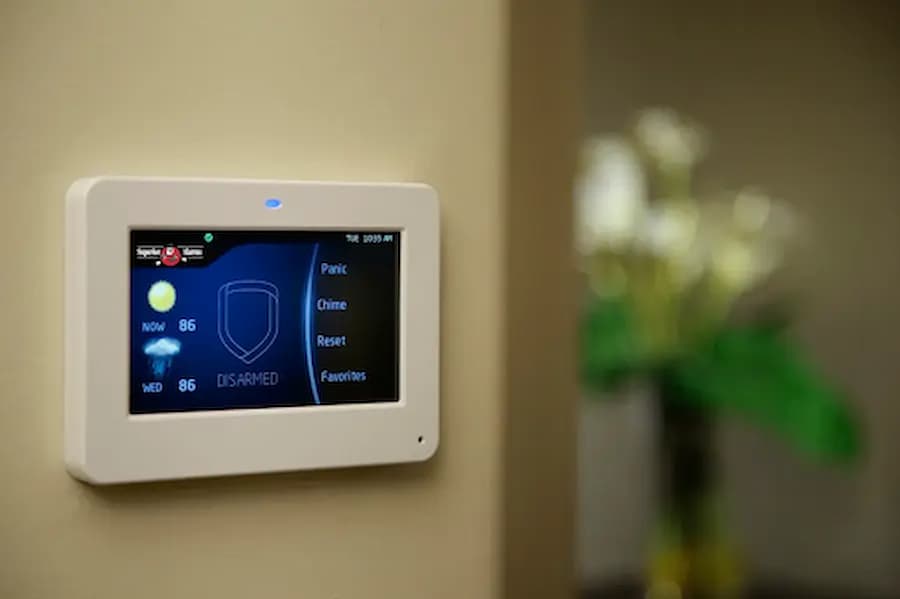The importance of the fire alarm system extends far beyond any statutory requirement alone it’s an investment in saving lives. Commercial wireless fire alarm systems are currently ranked among the most advanced safety solutions for any business. By applying wireless technology, companies are revolutionising strategies for fire safety to ensure rapid response times and simplify maintenance processes without allowing any means of reducing full coverage or dependable performance. In many instances, these systems can also integrate with wireless burglar alarm installations to provide an integrated method of security. This will not only bring added safety but also cost-effectiveness, as it will eliminate large amounts of wiring and manual checking that can become frequent, thus further strengthening the commitment towards saving lives and protecting assets. In this article we’ll explain that why wireless alarms are better.
Flexibility and Ease of Installation
Commercial wireless fire alarm systems have this remarkable flexibility for installation. On the contrary, the majority of wired traditional systems will require considerable construction work, causing unnecessary interruptions to businesses and also hiking the cost of installation. The communication between devices is driven by wireless systems using radio frequencies, which do away with the necessity for cumbersome wiring. This approach not only accelerates the installation process but also preserves the architectural integrity of buildings. This is particularly beneficial for heritage sites, rented spaces, or any establishment aiming to minimise operational disruptions. Additionally, the ease of installation often translates to reduced labor costs, making wireless systems a cost-effective solution for businesses that prioritize both efficiency and aesthetics.
Scalability and Future-Proofing
With business growth and development, there is an increasing demand for business safety. Wireless fire alarm systems are the appropriate solution to ensure scalability remains high, without any issues for changes in layout or increase in the size of the building. New detectors, alarms, and other safety devices are easily introduced into the existing network, meaning your fire safety infrastructure is extended in keeping pace with the needs of the business. This adaptability will keep your investment relevant while minimising the risk of obsolescence, which means reduced need for upgrades or replacements in the future both of which are usually very expensive to invest in. The ability to scale up with minimum reconfiguration makes these systems very ideal for dynamic environments whereby change is ever a constant.
Improved Reliability and Redundancy
Understanding of the following fact, contrary to what is believed by many, wireless fire alarm systems are highly reliable and safe. These systems use advanced encryption processes, which ensure that communication used by the devices is still kept secure from any problem that involves interference or hacking. Battery backups ensure continuous operation in the event of a power outage, offering an extra quality of security. On top of that, many systems are designed in such a way that in case one device fails, other devices within the network will immediately compensate, maintaining an uninterrupted safety net. It is the central wireless fire alarm system control panel acting as a hub for managed devices, which sends all real-time status reports up front and instant alerts in the case of any fire-related threats being detected.
Aesthetic Appeal
Especially in older or historic buildings where the integrity of the view is important, this solution removes unsightly wiring and blends with architecture. You can retain a building’s character while incorporating modern-day functionality using this method. This approach is useful in areas where the need for historical accuracy and aesthetics is high, since technology does not damage the heritage of the building. It creates a clean finish that is unobtrusive yet adds to the visual appeal without interfering with the historic value of the building.
Cost-Effective Installation
The absence of cabling and simplified setup drastically bring down installation costs, which makes this method cost-effective. Additionally, it reduces labor and material expenses by removing the need for extensive wiring and complex installations. This will then be cost-effective not only in the beginning but also in the long run, where maintenance is concerned. Fewer components and simpler systems usually mean lower associated ongoing costs. Also, fewer components make installations easier, reducing setup times and adding to the overall savings. It provides not only a cost-effective solution but also an effective way to integrate modern technology into older or historically significant buildings in a very practical and not overly expensive manner.
Conclusion
Wireless alarm system have more convenience and flexibility compared to traditional hardwired systems. Their installation is much easier and less intrusive, with absolutely no concern about comprehensive cabling required; this brings down the cost of installation. Wireless alarms offer truly advanced features, such as bidirectional communication, which allows for real-time notification and feedback on device status. This will provide a quicker response to any possible problems and enhance safety and reliability. Visit Variety Magzine for more informative blogs.











